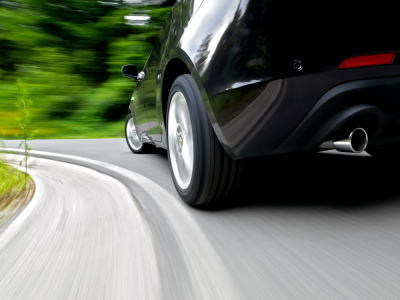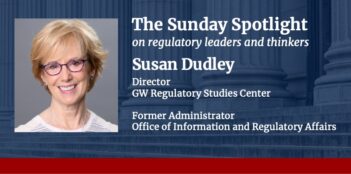
NHTSA study shows that no single countermeasure can combat motivations for speeding.
Over 10,000 people died in speeding-related accidents in 2009 in the United States. In order to combat reckless driving, the National Highway Traffic Safety Administration (NHTSA) recently released a report examining the types of people likely to speed and their motivations for doing so. The study set out to explain why people step on the gas in order to determine what countermeasures will serve as effective deterrents.
The NHTSA found that a variety of motivations lead a driver to speed. Additionally, speeding habits can take on a number of different patterns. As a result, the agency concluded that no single countermeasure would effectively deter every speeder or fully address the problem. Additionally, because the study involved a small number of people and uncovered very diverse driving behaviors, it did not yield sufficient data to fully evaluate existing countermeasures. However, after conducting focus groups with participants, the NHTSA concluded that countermeasures, such as speed traps can be improved if they are employed in a less predictable way.
The NHTSA installed a GPS system in the cars of 164 volunteers from Seattle, Washington, and College Station, Texas. The system compared their actual speed to the posted speed limit while they drove. The study identified four types of drivers:
- Type 1 drivers tried to stay below the limit but occasionally exceeded it.
- Type 2 drivers were not concerned about the posted speed, but tried to avoid getting a ticket.
- Type 3 drivers sometimes drove unsafely (10 or 20 miles over the limit) and sometimes risked getting a ticket.
- Type 4 drivers disregarded the posted limit and drove at a speed that most people would consider unsafe (20 miles over the limit).
Few drivers fell into the fourth category, so the Type 3 and Type 4 groups were combined for the purpose of analysis. The four patterns translated into four ranges of actual speeds. For example, the speed for Type 1 drivers in a 60 mph zone ranged from well below the speed limit to slightly above the limit but below 70 mph. The four speed groups were used to define speeding and speed categories. For the purpose of the study, ‘speeding’ means driving at least 10 miles over the limit.
The NHTSA created separate charts for driving that occurred on roads where the posted limit was 30-35 mph and roads where the limit was 55-60 mph. In Texas, it also considered 70 mph roads. Test subjects were separated into four categories: older females, older males, younger females, and younger males, and then they recorded the percentage of free-flow driving time each group spent at, below, or above the limit.
The study also considered an additional variable, “free-flow time,” or the amount of time that a driver could have spent speeding. The agency then deleted the intervals during which drivers lacked an opportunity to speed from the data collected, such as time spent waiting at a traffic light. To evaluate a driver’s speeding tendency, the authors divided speeding time by free flow time for each subject’s individual trips.
The study recorded the percentage of trips in which some speeding occurred. For trips that involved speeding, it also considered the percentage of free flow time during which the driver exceeded the limit by at least 10 mph. After accounting for free flow times, the study reorganized drivers into four new groups based on speeding patterns, as well as velocity:
Incidental speeders sped on a small number of trips for a small proportion of the time. Their speeding may have been accidental.
Situational speeders sped infrequently, but did so for a large percentage of the trip. These drivers tended to speed in certain situations, such as when they were running late for work.
Casual speeders sped on a large number of trips, but only for a small percentage of their driving time. This pattern indicated that their speeding resulted from the drivers’ individual driving habits.
Habitual speeders sped on many trips and for a large percentage of the time.
For low speed limit roads in Seattle, there were multiple drivers in each category. However, more females than males were incidental speeders and more males than females were situational or habitual speeders. In Texas, speeding was relatively infrequent on lower speed limit roads, however a few drivers sped for large portions of their trips.
The pattern for 55-60 mph speed limit roads in Seattle differed somewhat. Most drivers had many trips with little speeding. However, longer trips increased the likelihood that a driver might speed. There was a small group of habitual speeders. There were no situational speeders on the high limit roads in either location. On high-speed roads in Texas, many drivers sped on a large percentage of their trips for a moderately large proportion of the time. However, speeding was relatively infrequent on 70 mph roads.
In Seattle, young drivers were more likely to speed on any given trip than older drivers. Young males in Texas exhibited a similar pattern, but young Texan females drove more conservatively. Speeding was also more common in the morning and on weekends.
The study also considered socioeconomic factors. Seattle drivers who owned their vehicle were less likely to speed in high-limit zones. However, Texas drivers were less likely to speed on high limit roads if they had a low income (60 mph roads), no college degree (70 mph roads), or if they were driving a family car (70 mph roads). Socioeconomic variables were not significant predictors of the proportion of speeding that would occur on a given trip. Similarly, demographic variables were poor predicators of the percentage of a trip that an individual would spend speeding.
A driver’s tendency to speed was also affected by normative beliefs. Seattle drivers were less likely to speed if people they cared about believed that speeding is wrong. Subjective norms were also effective predictors of how much speeding a Seattle driver would do on an individual trip. In Texas, road rage and reckless driving predicted a greater proportion of speeding on low-limit roads. The study found that habitual speeding is closely linked to individual beliefs and personality traits. For example, in Texas, drivers who more frequently reported their own driving errors were less likely to speed. The NYTSA hypothesized that this finding could indicate that speeders are more confident in their abilities. In contrast to beliefs and personality, demographic factors are not effectively predict habitual speeding.
In the second part of the study, the authors divided the original participants into focus groups to explore attitudes about speeding and motivations for exceeding the limit. Participants were asked what they thought a speed limit meant. All drivers understood the posted limit “technically to be a maximum speed.” However, a number of speeders interpreted the limit as more of a target speed or even as the minimum acceptable speed. The drivers also reported factors making them more or less likely to speed. Speed-enhancing factors included inattention, social pressure from other drivers, and po
sitive feeling about driving fast. Factors likely to make them slow down included social pressure, and the risk of tickets or accidents.
Ultimately, the NHTSA concluded that the speeding is a complex phenomenon affected by numerous factors, including age, gender, type of roadway, beliefs, and personality. Because the Texas and Seattle results often differed, the agency found that geographic location could affect speeding patterns. For this reason, duplicating the study on a national level would be difficult. Additionally, the report concluded that no single deterrence method could fully address every aspect of the problem.



